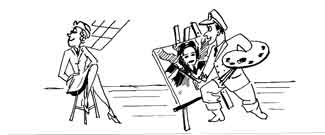The Tiddley Times was a newspaper produced by and for the Wrens that chronicled the activities, careers and life events of members of the wartime Women’s Royal Canadian Naval service (WRCNS).

Rosemary Baker saluting on the front cover of The Tiddley Times. She is pictured in the walking out uniform of the Wrens, but with a tricorne hat on her head instead of the everyday sailor cap. Behind her is the Naval ensign.
The Wren newspaper began in a small way in December 1943. It was produced out of Ottawa and featured articles from Wren correspondents all across Canada, the US and overseas, including Newfoundland, which was not then part of Canada and was considered an overseas posting.
The first issue featured a contest to find a name for the paper. Early suggestions included The Watchkeeper, The Siren, The Figurehead and The Dinghy.
The success that greeted the April-May 1944 issue of the paper really took its editors and contributors by surprise. The response “rejoiced all those who have been concerned with its production”, they noted: ~
“Judging by the heart-warming letters we have received since the issue made its appearance, the idea of a paper for Wrens, by Wrens, was a good one.”
The magazine’s front page caught the attention of the Canadian Press news service, and the fame of The Tiddley Times soon spread, mainly thanks to its cover image of Wren Rosemary Baker, which received enthusiastic promotion by newspapers across Canada.
Twenty-one year old Rosemary, of Vancouver, B.C. – she later became Mrs. Wilder Ripley and lived in Calgary, Alberta – was the only daughter of Mr. and Mrs. Letevre Baker. Rosemary had two brothers, Fred, a pilot with the R.C.A.F., and Brian, a schoolboy. She joined the WRCNS on 14 February 1943. For some time she travelled with the Canadian Naval Exhibition. Later she was drafted to HMCS STADACONA, where she served for seven months, and then moved on to Naval Service Headquarters in Ottawa.
Baker was chosen to sit for the cover portrait by Tiddley Times artist SLt. Whitmore because she was “awfully good looking…and photogenic.” But there was one hurdle for the project – permission had to be obtained from her Unit Officer, a Lieutenant Currie. As the editors explained, “it was an unusual request to make suddenly, but nothing phases Lieutenant Currie. ‘Okay’, she said, briskly, ‘but make it snappy’. And that’s how it happened.”
“I don’t know why they picked me,” Rosemary told the Canadian Press in an interview at the time. “The unit officer called me up and told me to bring my tricorne [hat] over to the naval art department; they drew my picture and so here I am on the cover.”

A Tiddley Times illustration shows SLt J.H. Whitemore painting Wren Rosemary Baker’s portrait for the front cover of the magazine.
Rosemary’s parents in Vancouver had no idea their daughter’s picture was splashed across the front page of the daily paper until the ice delivery man called out to them: “I see our Rosemary’s made the front page.” The Bakers grabbed the newspaper from their doormat and there, smiling up at them, was their daughter.
It’s a sign of those times that it took a good-looking cover to focus national attention on the Wrens and their newsletter. Readers who managed to make it past the front page would have discovered that the members of the Women’s Royal Canadian Naval Service were tackling all kinds of jobs and taking on many new and demanding responsibilities in their contribution to the war effort.
To see copies of The Tiddley Times, click on the links in the sidebar, right, this page, to view them in PDF format.
By Clare Sharpe
Museum staff member/webmaster

 CFB Esquimalt Naval and Military Museum
CFB Esquimalt Naval and Military Museum CFB Esquimalt Naval and Military Museum
CFB Esquimalt Naval and Military Museum